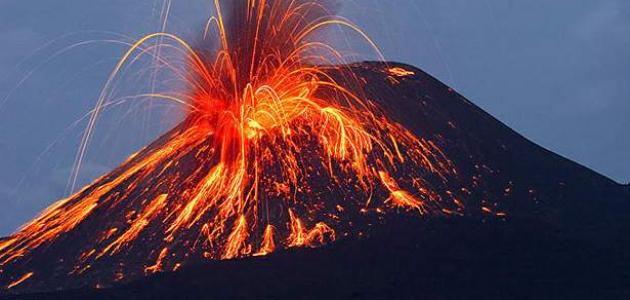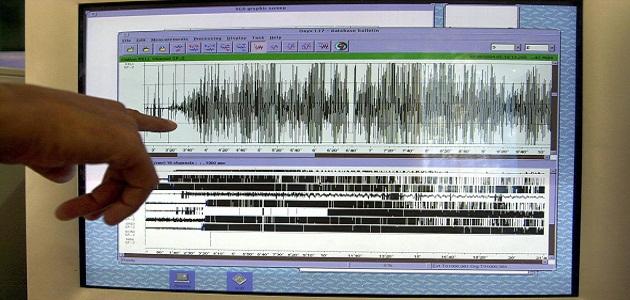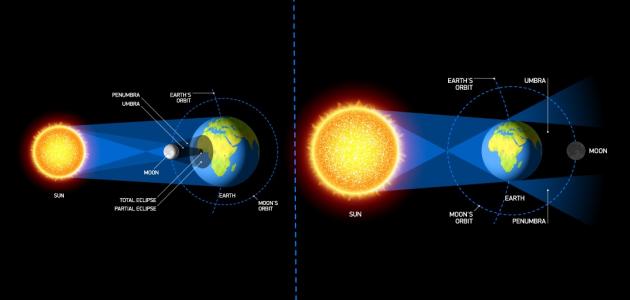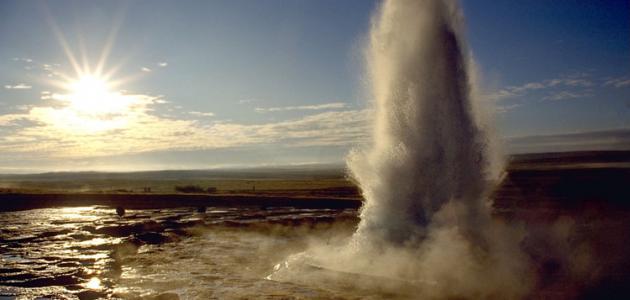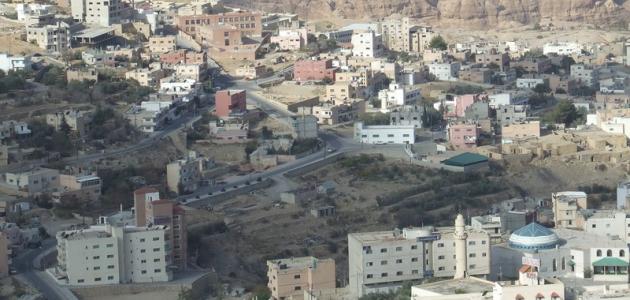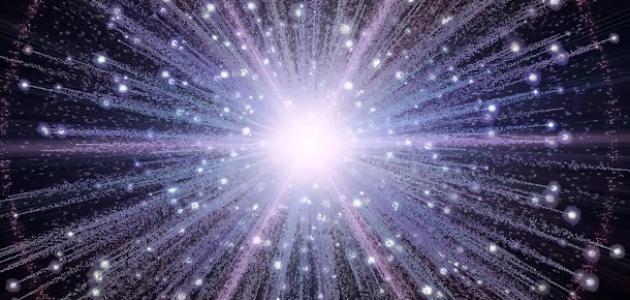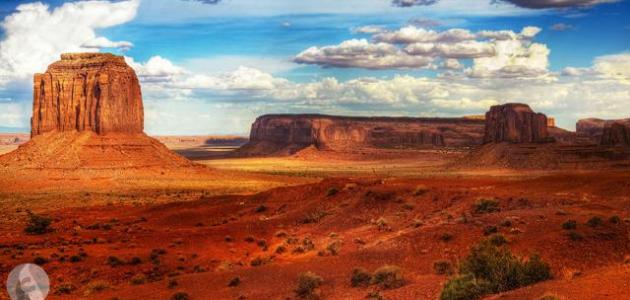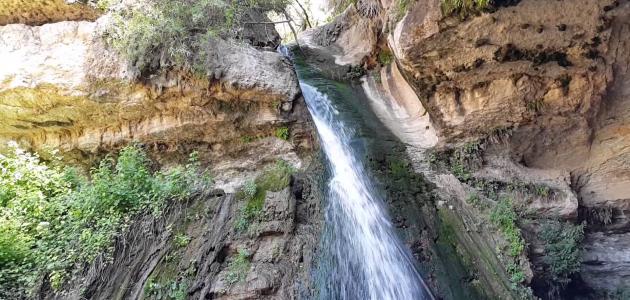How volcanoes affect the Earth's surface
Volcanoes are considered one of the most influential natural phenomena on the surface of the Earth, as more than 80% of the Earth’s terrain, whether on land or under the oceans, is of volcanic origin. Volcanoes are responsible for the formation of many mountain ranges and islands emerging from the oceans, in addition to fertile soil. And hot water springs, and ocean floors, and the gases emitted from volcanoes played a major role in the formation of the oceans and the atmosphere millions of years ago. On the other hand, volcanoes are a major cause of the destruction of forests, the extinction of living organisms, and the destruction of facilities. Below is a breakdown of the effects of volcanoes on the surface the earth:
Terrain and volcanic vents
A volcanic eruption causes the formation of many volcanic terrains and vents that vary in shape and size depending on the composition of the volcanic magma. Among the types of terrains that arise as a result of volcanic eruptions are the following:
- Cinder Cone Volcanoes.
- Composite volcanoes.
- Shield volcanoes.
Lava domes
The amount of magma in some volcanoes is small, and the pressure generated from the ground is small and not sufficient for a strong volcanic eruption to occur. The lava comes out slowly and piles up in the shape of a dome around the volcano’s crater. Also, if the viscosity of the magma is high, this prevents it from moving away from the crater of the volcano, so it accumulates. Dome-shaped around the nozzle.
Read also:Strange cosmic phenomenaVolcanic plateaus
Plateaus result from volcanic eruptions called fissure eruptions, through which large quantities of basalt lava flow, which accumulate on top of each other, forming what look like sheets or flakes that cover large areas. Despite the vast areas covered by plateaus, it is not required that large amounts of eruption erupt. A large amount of magma at once. The magma flows may be small but over a long period of time. Examples of volcanic plateaus include the Deccan Plateau in India and the Columbia River region in the United States. Plateaus may also extend over vast areas, forming entire provinces, such as the Basalt Province in Siberia, which led to the eruption. Its volcano ended 95% of life in the region.
Volcanic lakes (calderas)
Volcanic lakes, or so-called calderas, result from violent volcanoes, as they are low above the ground level. When the magma completely exits the magma chamber, the chamber becomes empty, and the upper layer that was based on the magma collapses, forming a low layer called the lake. Volcanic, such as: Lake Taupo and Lake Rotorua.
Layers of igneous clastic sediments
Igneous igneous deposits consist of Rhyolitic Ignimbrite and cover vast areas such as the Tabo volcanic region in northern New Zealand, which extends over an area of 20000 kmXNUMX.2The area is still volcanically active due to the presence of many hot springs in addition to volcanoes. Yellowstone National Park in the United States is considered another example of layers of igneous igneous deposits, as it contains one of the largest plateaus of igneous igneous deposits in the world with a size of 6000 kmXNUMX.3 It accumulated over approximately two million years, and it also contains hot springs, so it is considered a volcanically active area.
Read also:How is thunder formed?How volcanoes affect the Earth's interior
Melts underground are the primary source of many minerals, as they produce the porphyry precipitate, which is responsible for the formation of 75% of copper, 50% of molybdenum, and 20% of gold around the world. The magma also produces brine solutions and sulfur-saturated gases that interact together to produce ore. Copper. In addition, hot rocks and molten rocks are a source of thermal energy in the ground. Water flowing from springs may come into contact with hot rocks, which leads to a significant increase in their temperature and their appearance on the surface of the Earth in the form of hot springs.
How volcanoes affect the atmosphere and climate
Volcanoes also affect the atmosphere, and the impact of emissions and gases that spread in the atmosphere is not limited to the place where volcanoes occur due to the rotational movement of the Earth. At a time when the number of explosive volcanoes was very large, these volcanoes led to the release of large quantities of greenhouse gases that are considered A major cause of global warming, as particles emitted from volcanoes block part of the sun's rays, cooling the Earth due to the decrease in solar radiation that reaches it. This process may continue for long periods depending on the nature of the volcanic activity.
Impact of dust and ash particles
The particles emitted from the volcano mainly affect the process of cooling the Earth, and the effect of large particles is less than the rest of the particles because they fall to the ground with the movement of the wind and are not transported, while the smaller particles form clouds in the troposphere that cool and shade the area under which they are located and from which rain falls. As for the ultra-small particles, they pass upward into the stratosphere, and are able to block the sun's rays and cool different regions of the world depending on their location.
Read also:When does the fall semester start?Sulfur effect
Volcanic eruptions are accompanied by the emission of sulfur dioxide gas, which rises into the stratosphere and reacts with water molecules to form sulfuric acid, which in turn forms a foggy layer of mist that reflects the sun's rays. Therefore, it is considered more effective than ash and dust particles in cooling the Earth, and acid droplets may remain in the atmosphere for 3 years before their mass increases and falls on the Earth’s surface in the form of acid rain.
Effect of greenhouse gases
Volcanoes emit some greenhouse gases such as carbon dioxide, but their emission does not lead to a rise in the levels of greenhouse gases in the atmosphere unless the emission continues for a long period and results from the eruption of more than one volcano, as happened in one era and this led to a rise in the proportion of carbon dioxide. Carbon, which causes the Earth's temperature to rise and global warming to occur.
The direct products of volcanic eruptions and their impact on Earth
Many substances in their various solid, liquid and gaseous states are emitted from volcanoes and have strong effects, as follows:
- Ash: It is one of the volatile elements that accompany volcanoes, as it flies across vast areas of the Earth, and has many negative effects on the Earth, such as:
- It contains acids that affect the respiratory system and cause irritation to the eyes.
- Pollution of fresh water sources.
- Causing various damages to plants.
- Buildings collapse if ash accumulates on their roofs.
- Damage to electrical wires and installations.
- Reduced visibility and the formation of a sticky layer on the roads.
- Mud and debris: Some volcanoes may be accompanied by the eruption of a mixture of sticky mud accompanied by debris and rocks of different sizes that may reach 10 meters in diameter. Stratovolcanoes are famous for their huge explosions and flying debris. The speed and size of these outputs vary according to their components, the percentage of water in them, and the level of slope of the surface. Its size may increase significantly if the rocks it carries melt and absorb water.
- Lava: Volcanic lava erupts from the ground in the form of moving streams of molten rock, and usually does not pose a threat to human life due to its low speed. Its speed ranges between 1-10 km/hour depending on the slope of the surface on which it is moving, and its speed may reach 30 km/hour. If it is confined to a closed path.
- Volcanic fragments: (English: Tephra); It is a group of fragments made of volcanic rocks that are scattered in the air when a volcanic eruption occurs. They vary in size, with diameters ranging between 2 mm and 1 m.
- Volcanic detonations and volcanic torrents: These products consist of a dense mixture of dry, high-temperature rock fragments and gases. They are released at high speeds from the volcano's crater and head toward lowlands such as valleys, forming sedimentary layers whose thickness ranges between one and two hundred metres.
- Volcanic gases: Many gases are emitted from the volcano's crater, such as: water vapor, carbon dioxide, sulfur dioxide, hydrogen chloride, and hydrogen fluoride. Some of them pollute the air and form acid rain, some of them affect the oron layer, and some of them seep into the soil and lead to... It leads to the death of animals and plants, and some of them interact with the fine grains that animals eat and cause their death.
